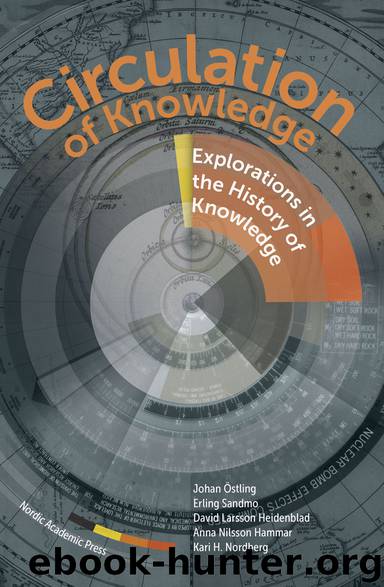Circulation of Knowledge by unknow

Author:unknow
Language: eng
Format: epub
ISBN: 9789188661296
Publisher: Independent Publishers Group
Published: 2017-12-25T20:00:00+00:00
Mounting challenges and failed interventions
Challenges towards the traditional university teaching culture started mounting in the 1960s. The subsequent developments aptly illustrate how a new societal situation, causing new problem definitions and rising perceptions of crisis, sets knowledge in motion and triggers the need for new knowledge.12 There was a marked political will to invest in the expansion of higher education, since it was seen as key to higher productivity and economic growth. Yet the rapid increase in student numbers also led to an increased public interest in the cost efficiency of the higher education system from the mid-1960s on. Politicians and state officials started drawing attention to the protracted period of study at Finnish higher education institutions. The university dropout rate was increasingly seen as an indication of a failing university system rather than as the shortcomings of individual students. Student activists were increasingly angry about disorganized courses, non-existent study guidance, the poor standard of compulsory mass lectures, and lack of individual guidance.13
Actors both outside and inside the university sector started pushing Finland’s universities into adopting research-based, formalized knowledge about education, teaching, and learning, attempting to force new circulations between academic lecturers, higher education experts, and political decision makers. The government made an early intervention through a statement in 1966, demanding that the universities act in order to shorten the length of study, reduce dropout rates, develop teaching methods, and rationalize the structure of university degrees. This, however, had little effect.
At the time the professors at ÅAU, just like their colleagues at other universities, were busy trying to cope with the ever-increasing number of students pouring into the university, which had caused acute shortages of teaching and office space as well as academic and administrative staff. Student numbers tripled at ÅAU in the 1960s, from about 1,000 in 1960 to 3,000 in 1970. Amid this onslaught, few professors were prepared to consider major overhauls of structures and methods at the departmental level. Neither was there yet much of a central university administration at ÅAU that could have pushed for wide-ranging reforms. The university in the 1960s was still very much a ‘republic of professors’, where each professor governed his own discipline as a sovereign territory. The professors were the sole members of the university council and the faculty boards that were the main decision-making bodies at the university. They were resistant to all bids for external or top-down control, and appalled by the idea of interfering with the educational methods of their colleagues.
Student politics, meanwhile, was a university arena that was firmly connected with the national stage and its political debates. Here critique of traditional forms of higher education and new ideas about the university circulated with increasing speed in the late 1960s. Inspired by similar actions at other Finnish and European universities, the Socialist Students’ Association at ÅAU published a manifesto in October 1968, called ‘18 indictments of the old teaching’. They scorned the ‘compulsion to passively receive knowledge’, the scarcity of genuine interaction between students and lecturers, and the lack of any clear conception of the aims and effects of the education students received.
Download
This site does not store any files on its server. We only index and link to content provided by other sites. Please contact the content providers to delete copyright contents if any and email us, we'll remove relevant links or contents immediately.
The Bone Broth Miracle: How an Ancient Remedy Can Improve Health, Fight Aging, and Boost Beauty by Ariane Resnick(16576)
How to Be a Bawse: A Guide to Conquering Life by Lilly Singh(7436)
The Fat Loss Plan by Joe Wicks(4874)
The Ultimate Bodybuilding Cookbook by Kendall Lou Schmidt(3906)
The French Women Don't Get Fat Cookbook by Mireille Guiliano(3629)
A Jewish Baker's Pastry Secrets: Recipes from a New York Baking Legend for Strudel, Stollen, Danishes, Puff Pastry, and More by George Greenstein(3565)
Better Homes and Gardens New Cookbook by Better Homes & Gardens(3547)
Super Food Family Classics by Jamie Oliver(3383)
Dinner in an Instant by Melissa Clark(3131)
Bread Revolution by Peter Reinhart(3100)
Tom Kerridge's Dopamine Diet: My low-carb, stay-happy way to lose weight by Kerridge Tom(3078)
Body Love by Kelly LeVeque(3029)
Ottolenghi - The Cookbook by Yotam Ottolenghi(2898)
Flavor Flours by Alice Medrich(2827)
The Fat Chance Cookbook by Robert H. Lustig(2811)
Tone Your Tummy Type by Denise Austin(2811)
Oh She Glows Every Day by Angela Liddon(2751)
LL Cool J's Platinum 360 Diet and Lifestyle by LL Cool J(2708)
The Kitchen Counter Cooking School by Kathleen Flinn(2499)
